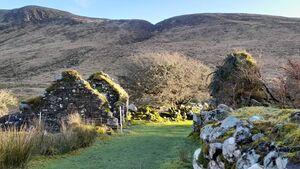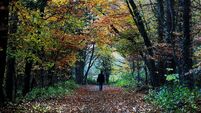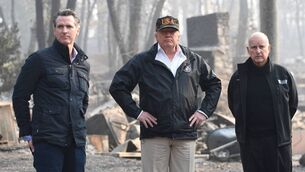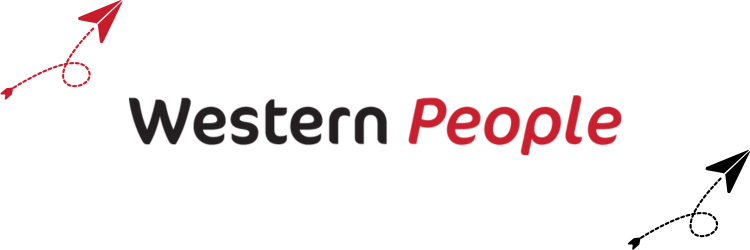Townland names contain a wealth of history

A simple analysis of a name can reveal much information about a place, its history and what makes it unique.
For Ox Mountain people, wherever we may go in the world, when thinking of home and childhood, our place of origin is defined by our townland. Its name will be dropped in conversation as easily as the word 'mother'.
A townland (Irish: baile fearainn; Ulster-Scots: toonlann), is a small geographical division of land, historically and currently used in Ireland and in the Western Isles in Scotland, typically covering 100 to 500 acres. The townland system is of Gaelic origin preceded the Norman invasion. Most have names of Irish origin but some townland names come from later creations of the Ordnance Survey, as referenced in , the play by Brian Friel. The total number of inhabited townlands in Ireland was 60,679 in 1911. The total number recognised by the Irish Place Names database as of 2014 was 61,098, including small uninhabited islands. Mayo, for example has 3,422 townlands and Sligo has 1,289.
James Joyce said: “The particular is contained within the universal.” The great writer, John McGahern was hugely inspired by his local surroundings and Patrick Kavanagh espoused a similar theory about our places of origin when he suggested: “The whole world is in our townland.” Kavanagh loved his own townland, Mucker, and every townland in his parish. He loved their names, their fields, their barns, their hedges, and their laneways. To him, these were sacred places, a holy land.
Let’s examine Kavanagh’s observation. I think he means that all the beauty, all the wars and all the great love affairs that we associate with the wider world are, in fact, right beside us in our own place. That magnificent view, the joy of nature and the feeling of being grounded in a special place are all around us in our own townland. The bad fence, the lengthy feud, the love of land, the tyrant, are common to every townland, as they are to every nation on earth… Shancoduff, Béal na Bláth, Syria, Ukraine, Gaza.

Our smallest and oldest basic unit of land is often the key to finding the location of our ancestors and their old homes. The name usually reflects a local identifiable landmark, for instance a hill, wood, church, castle or ancient monument. According to Amy Stewart, writing for BBC Northern Ireland, the townland has always been of importance in defining place.
Stewart’s article went on to feature a recent body of work undertaken by Andrew Kean. She explains that Kean’s role as a research consultant with the Ulster Historical Foundation, often puts him in the position of assisting those researching family history - and townlands are a primary building block for that work.
No wonder that the Ulster Historical Foundation has described them as a fundamental unit of Irish life. But while a strong connection to townlands still exists in many tight-knit rural communities, their use is no longer as official as it once was.
Andrew Kean, who is passionate about preserving townland names, started an ambitious lockdown project, which has grown into a book, . For anyone doing family research with a rural background, he said, "a townland name is the most important thing". Kean is, of course, quite right; the search for our roots often leads us to a particular townland. It is when we find a particular placename, either in parish records or a local library, that we get more confident that we are pointing in the right direction. My own family name, McCarrick, is often the subject of genealogical interest. While a good example - there are not that many of us and most seem to have some connection with south Sligo – it still takes finding a particular townland to best define the original family line.
The conversation might go somethings like this.
“Well, there was a branch of the family in Loughill and then there were branches in Cloonbaniff, Carnaleck, Doomore and Carrowreagh. Then there were other branches in Trinta, Renbane, and Cloonbarry.”
One of these townlands was likely to ring a bell and so the hunt would be narrowed down. This search would be similar for most families… unless your family name was Henry. Cloondrihara (Meadow of the Brothers), near Knocknashee, got its name because it was the birthplace of seven Henry brothers that were once born there. The parish of Cloonacool is noted for its countless Henry families, many of them in the same townland.
Even the sound of the name of a townland can give comfort. Carrownageeragh (Quarter of the Herd), in the parish of Killasser is a good example. A simple analysis of a name can reveal much information about a place, its history and what makes it unique. Many of the landmarks and special traits that made an area unique and gave rise to its placename are now gone from our landscape. They are only remembered in the old name, hidden in a precious code.
Culdaly is a townland in the parish of Kilmactigue which rests high in the Ox Mountains. A quick check on the name tells us that its meaning is 'The wood of the two calves'. It could well be the case that this reference to calves dates back to a legend that is thousands of years old and is likely a reference to the naming of the Ox Mountains themselves. A contribution to the National Folklore Schools' Collection, from the 1930s, made by Patrick Walsh of Tourlestrane in south Sligo, goes some way in explaining the origin.
Going back to the theory offered by Patrick Kavanagh, his point is probably best illustrated in the pages of his only novel, . The story is a beautiful account of life as it was lived in Ireland in the 1930s. The promotional blurb for the book says it all.






